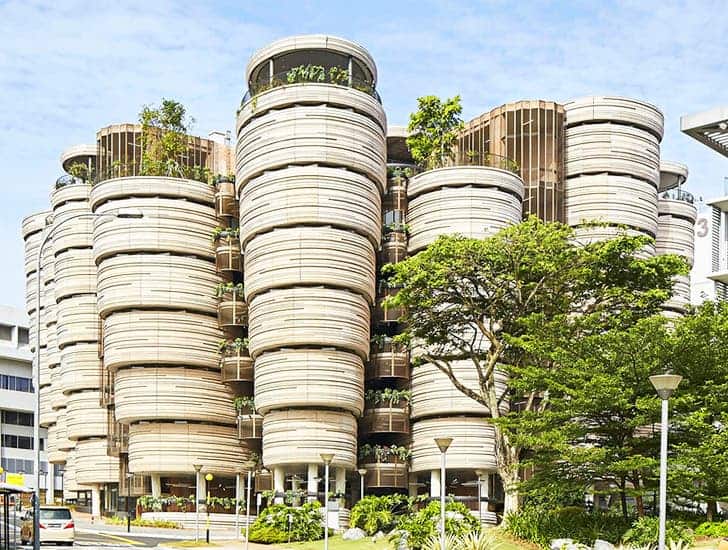Designer Thomas Heatherwick just completed construction on a cluster of 12 parsnip tornado-shaped towers for the Nanyang Technological University in Singapore. The building, called the Learning Hub, is part of a larger project to help redesign educational architecture and make the university a more attractive place. I have to say, it seems to be working – it’s one of the most spectacular designs I’ve seen lately.
“Heatherwick Studio’s first major new building in Asia has offered us an extraordinary opportunity to rethink the traditional university building,” explained Thomas Heatherwick.
Nanyang Technological University (NTU) is one of the newer universities in Asia and in the world; inaugurated in 1991, as an English-medium technical and teaching college, the university has since grown into a full-fledged research facility, with over 33,000 undergraduate and postgraduate students. In the 2014 QS World University Rankings, NTU is ranked 39th globally (6th in Asia), and is placed 1st in the world among young universities. All in all, it’s growing fast both in number, and in scientific results; and if you want to attract the area’s bright minds, you need some bright structures – that seems to be the reasoning behind NTU’s management.
“In the information age the most important commodity on a campus is social space to meet and bump into and learn from each other.”
The 12 towers are organized around an atrium area and include balconies, open-air corridors and gardens as informal learning spaces. There are 56 oval classrooms in the towers. The circular design was vital, to symbolize an open area where professors and students can openly interact and share ideas. The lack of corners is no coincidence, encouraging collaborative learning and highlighting the fact that everyone is equally important in the educational process.
For the project, London-based Heatherwick Studio collaborated with local firm CPG Consultants. Clad with curved concrete panels, the towers feature irregular horizontal stripes that were created using 10 adjustable silicone moulds.
As for the inside, I really like the fact that the building is naturally ventilated, saving energy and allowing air to circulate throughout all the areas.
“The Learning Hub is a collection of handmade concrete towers surrounding a central space that brings everyone together, interspersed with nooks, balconies and gardens for informal collaborative learning,” added Heatherwick.
Both the students and the professors seem to enjoy this new design:
“The new Learning Hub provides an exciting mix of learning, community and recreational spaces for NTU students, professors and researchers from various disciplines to gather and interact,” said NTU Professor Kam Chan Hin. “By bringing people and their ideas together, NTU can spark future innovations and new knowledge that increasingly happen at the intersection of disciplines.”
Photography is by Hufton + Crow.














